They can be incredibly cute, I’ll give you that, although you may not see them as quite as cute when they make a nest inside the insulation of your roof.
Good Food Revolution Trigger Warning (as we really don’t like to upset our readership):
Before we go any further, the following article contains both imagery and text concerning the hunting, skinning, gutting, and preparation of north American squirrel that some may find distressful and/or distasteful.

There’s a grand tradition of squirrel hunting and consumption all across North America that goes way back.
For over a decade or so I have observed that as a culture we are becoming less and less attached to the earth that supports us with each passing day, and indeed it was our mutual concerns about this that led to the founding of Good Food Revolution back in 2010.
Today, when we get hungry for protein, most run to the supermarket and pick up a pack of shrink-wrapped meat, seldom giving a second thought as to how that meat got to the grocery shelf. And so, with a view to getting closer to the source of my food than most would be comfortable with, in the Fall of 2016 (mere days after the US election – no coincidence there) I decided to learn how to hunt.
Running in parallel to my new found interest (read: midlife crisis) came a related passion for self-sufficiency that upon occasion flirted with the concept of survivalism. Being a voracious information sponge, I gorged upon mountains of books and websites, and in my deep-dives I read over and over again that if the world did really fall apart and one had to live off the land, it wouldn’t be big game that one would be surviving upon, it would be the smaller critters: rabbit, hare, and squirrel.
It is with this in mind I come to writing a small piece about my gastronomic experience with squirrels as part of a new series that will touch upon all aspects of eating in the wild, from foraging, through freshwater crayfish, to deer, and everything in between.
I think that it is important to state, just for the record, that we aren’t talking about Toronto urban squirrels here; we are referring to their country bumpkin cousins.
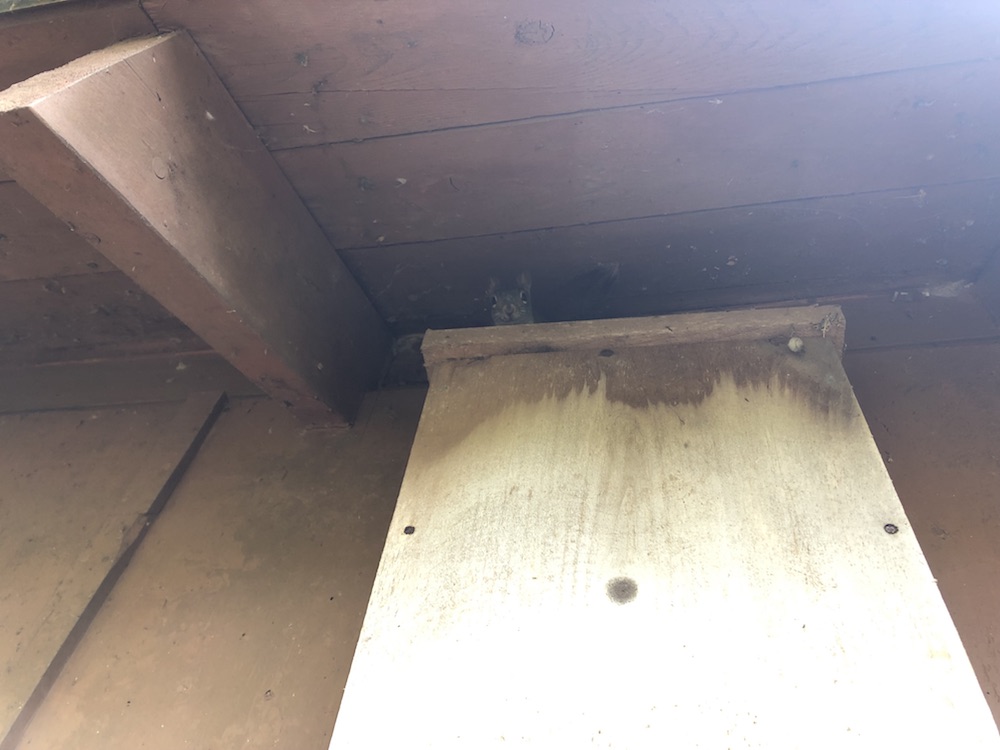
“So THAT’S how you little buggers are getting into the roof!”… I just couldn’t work out why there was insulation strewn all over the floor of our tiny Bruce Peninsula cabin.
Whilst most of us don’t think of little cute-as-a-button squirrels as being food, back in North America’s recent history they were seen by many as an readily available source of tasty protein, which happened to be rather handy as they were also extremely popular as domestic pets.
Although it is widely documented that squirrel supplemented the protein of frontier families who needed meat to bolster their stews, it was only three to four generations ago, that most folks, especially outside of the larger cities, would have truly appreciated the sights and smells of a squirrel simmering in the skillet. Having read much about their consumption over the centuries, I’ll admit that I was most curious as to how they tasted.
Upon discovering a veritable invasion of the little fellows in the roof of our Bruce Peninsula cabin I decided that rather than pay a professional to drive up there and deal with the issue I was going to conduct my own pest control.

A Daniel Boone “Squirrel Sweeper” ad from 1927. Note the interesting 16 Gauge calibre. The smaller the gauge number, the larger the shotgun bore. Gauge is determined by the number of lead balls of size equal to the approximate diameter of the bore that it takes to weigh one pound. And it was only $27
The squirrels in question had chewed their way through the cabin’s siding and into the insulation, and so one of the first signs that something was afoot was tufts of orange fluffy stuff on the floor of the living area inside. At first I had decided I would trap them and ensure that they were all evacuated from the nest before sealing up their entry points with chicken wire.
This was all fine and dandy, but what was I going to do with all these live squirrels afterwards? Relocation appeared to be the best tactic, but then I did a little research on the subject and was to learn that such a practice is actually illegal within Ontario as it is seen as being both an inhumane and an ineffective method of dealing with the issue at hand. And so I decided to look at the problem though an epicurean/survivalist lens… waste not, want not, and all that.
A little more research led to discovering that a .177 air pellet directly to the head was the most humane method of dispatching a trapped squirrel.
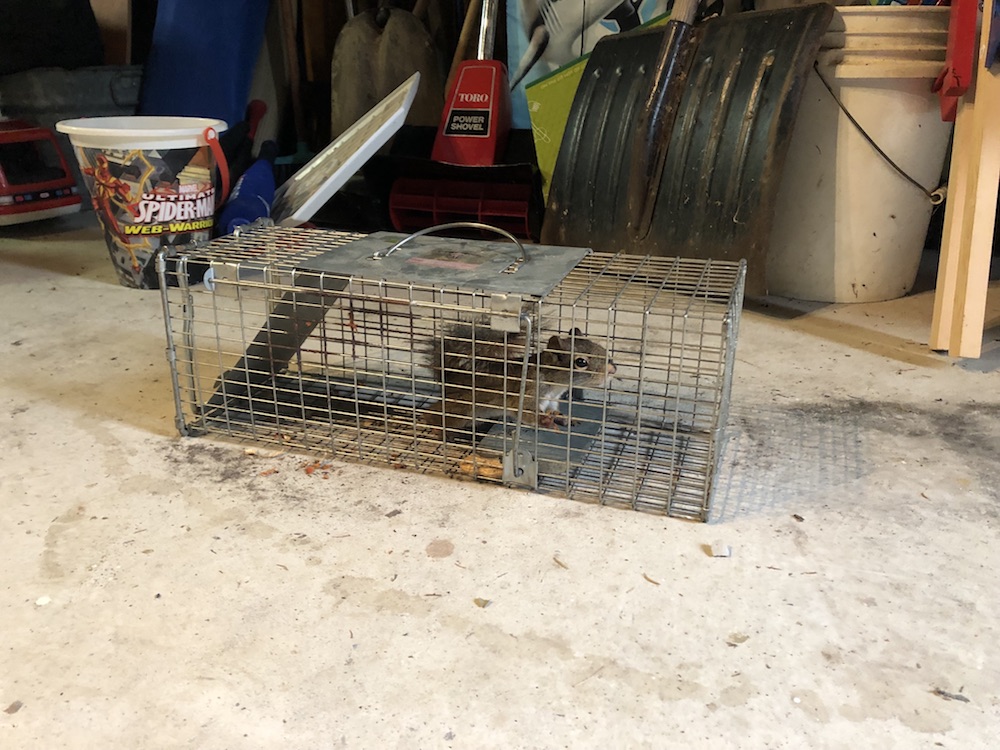
I was originally going to live trap the squirrels and relocate them, only to discover that such practices are actually illegal within Ontario according to the Fish and Wildlife Conservation Act, as well as being inhumane and totally ineffective… and so I decided to quickly and humanely dispatch the animal using an .177 calibre air pistol to the head with a view to harvesting the meat for consumption. All done with the utmost respect for the woodland creature.
As this had begun as a legitimate pest control exercise I had gone with the trapping option, however during hunting season there are number of tools that one can utilise to harvest squirrel meat:
1 : A high-powered air rifle chambered in 22 or .177 – Inexpensive and a quieter option so you don’t upset the neighbours.
Probably my recommendation, as they are a reasonably inexpensive investment, require little-to-no maintenance, and the pellets are dirt cheap and readily available from Canadian Tire. Oh, and in a survival situation they are relatively quiet. You’ll probably want to get one with a muzzle velocity of more than 500 fps (feet per second) for the most humane kill, but note that these are nothing like a Red Ryder BB Gun and require a PAL firearms certificate.
2 : A Ruger 10/22 semi-automatic rifle – The classic for small game hunting.
22LR rimfire is thee small game calibre, and again relatively inexpensive and easy to find, even at Canadian Tire and Home Hardware outside of larger cities. Choose HP (Hollow Point) and not Varmint/fragmenting rounds if you wish to eat afterwards. Once spooked, squirrels are incredibly fast, so the semi-auto comes in handy for a follow up shot. PAL required.
3 : A smaller gauge shotgun – Some swear by these for small game hunting.
Not my personal favourite, but due to the scatter/spread of the pellets much easier to take out an animal on the run or bird on the wing. Whilst many choose a 12 gauge for smaller game I personally prefer the diminutive 20-gauge or .410 gauge loaded with #5 or #6 shot, which also has very little kick. Be prepared to be picking pellets out of your meat though… safest to use steel shot. PAL required.
4: A crossbow – A little more esoteric, but you don’t require a firearms licence.
Once sighted-in and with a bit of practice crossbows are amazingingly accurate up to around 20 yards. I personally favour a compound model. Use judo points or (in a pinch) field points for all small game. And again, this is one of the quieter options out there. It still blows my mind that a licence isn’t required for these. Oh, and in a survival situation one can reuse the bolts.
5: A slingshot – A lot more difficult to use than one would ever imagine.
I’m not really in favour of the lowly slingshot for small game hunting, as I’m not wholly convinced that they are reliably capable of delivering a quick and humane kill, and can unfortunately quite often simply wound the poor animal. They are also incredibly difficult to master.

I’ll spare you the grisly details of my personal squirrel skinning/gutting experience and merely show you the aftermath and the tools required: a sharp skinning/gutting knife and a hatchet (for paw and head removal) the same goes for rabbit/hare BTW… to be covered in a later episode.
As well as the moral/ethical questions surrounding the dispatching of an animal, another factor of hunting that puts so many off is the skinning and gutting of the animal, AKA field dressing.
Field dressing is something that takes a bit of getting used to, but it is an essential part of the process if you wish to consume the animal at some point in the future, as leaving any just-harvested animal intact for a length of time will lead to the rapid degradation of the meat.
Squirrels are notoriously tricky to field dress if you don’t want to be left with something that looks akin to a hairy, bloody hotdog, and due to the little flesh on them it is especially important to carefully gut the animal without bursting the organs or intestinal tract, contaminating the meat and making it inedible. Be especially careful not to puncture the green gall bladder within the squirrels liver as that will render your harvested squirrel totally unusable. Also, watch out for ticks in the animal’s fur… Lyme disease and all that, you know.
There are many methods of field dressing a squirrel out there, but I found the one in the video below to be the most efficient and easiest to master, although I tend to use a small hatchet on a cutting board to remove the paws and head.
I cannot stress enough just how sharp your knife has to be for this task. Also, it takes me a lot longer that 90 seconds. Not for the squeamish…
NB: It is important to get your skinned and gutted squirrels into a ziploc bag and refrigerated as soon as possible, as still-warm meat can spoil with some rapidity.
Back in the safety of your cabin you can think about how you are going to prepare your harvest of squirrels…
What with the squirrel basically being like a fur-wrapped tree-jumping spring, the flesh is incredibly lean and quite tough and stringy. With this in mind I would recommend a four to five day marinade in water, cider vinegar, and garlic to break down some of those taut muscle fibres.
Some seasoned hunters swear by simply leaving the field dressed squirrels in the fridge for about a week with no marination, but I much prefer the flavours imparted by the marinade.
As you can see by the colour of the flesh, the squirrel is quite a gamey beast, so think about the stronger flavours of hardier herbs such as thyme and rosemary, and if you go down the slow-cooked route utilise the magic of juniper berries and bay leaves.

The incomplete mise-en-place for a quartered pan-fried squirrel. Missing… a little flour and a squeeze of lemon. Note the colour of the meat here, a world away from the farmed rabbit meat that you see in butcher’s shops.
Pan-frying in some butter with herbs and garlic led to a delicious but occasionally frustrating luncheon, as the meat on the tiny bones was extremely finicky, even more awkward than eating the slim pickings on a quail… both my son and I loved it though.
Other options would be a long marinade followed by the slow-cooker treatment, in a red wine-based gravy, and I’d probably recommend about two or three squirrels per person.
If you are feeling a little more adventurous you can track down Au Pied De Cochon Chef Martin Picard’s Sugar Shack cookbook where he presents a rather elaborate dish of squirrel sushi, although I think I’d prefer mine fully cooked.
Wine-wise I’d follow the lead of the hardier herbs, going for bolder flavours, so a nice rustic red from Languedoc, or perhaps one of the better Ontario Gamays with that lovely peppery rotundone edge.

Pan frying the little guy with some garlic and herbs in my excellent trusty Staub cast-iron frying pan.
Whilst I understand that the hunting, preparation, and eating of squirrels is certainly not for everyone, I found the exercise deeply satisfying, and will certainly hunt more of them come this Fall’s open season.
When it comes to any hunting please ensure that you do everything safely, legally above board (with the correct certificates and licenses), and with the utmost respect for the animals that you harvest.

The end product : pan-fried squirrel with garlic and herbs. Quite delicious, but I think I’ll prepare it a little differently the next time around. Roll on September 25th.

Edinburgh-born/Toronto-based Sommelier, consultant, writer, judge, and educator Jamie Drummond is the Director of Programs/Editor of Good Food Revolution… And that was something that he’ll certainly try again.

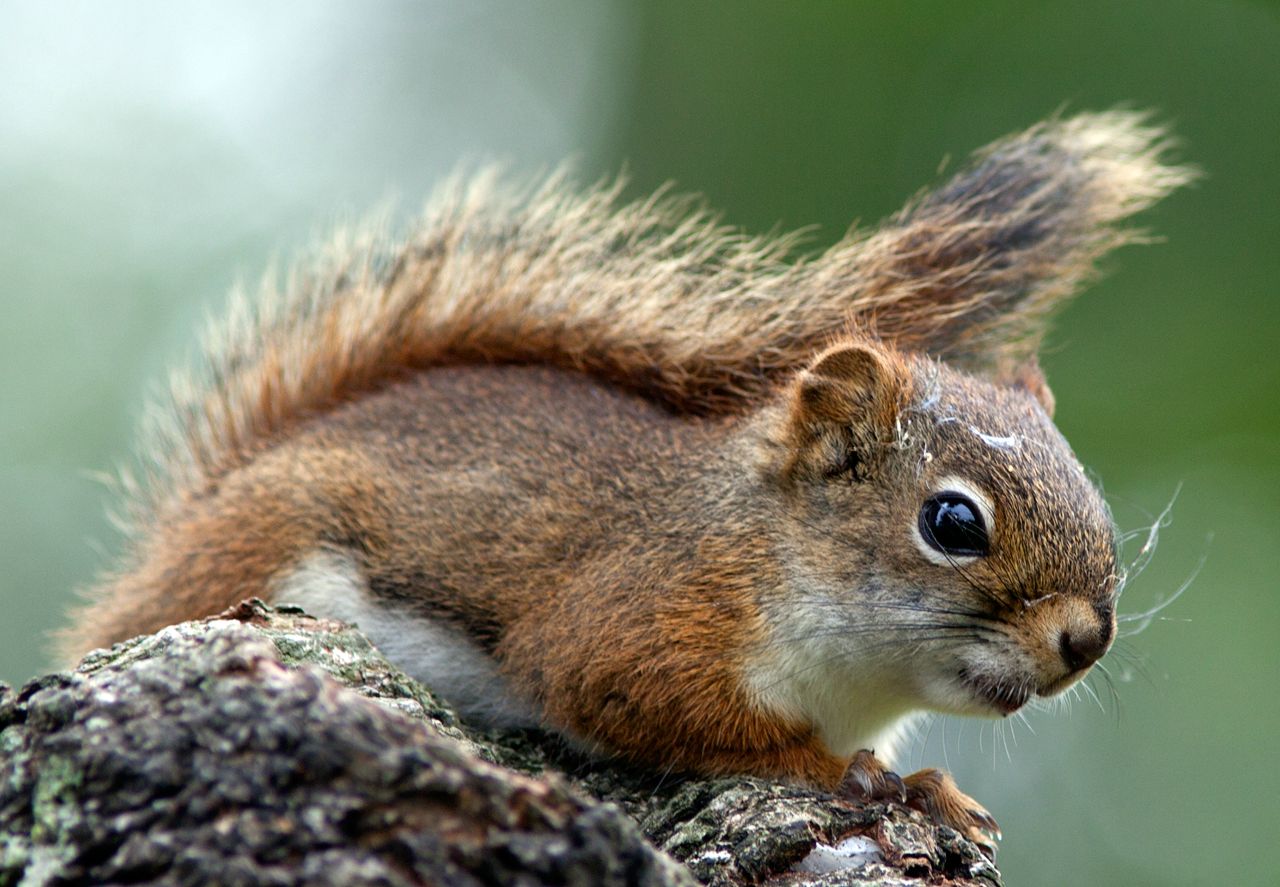

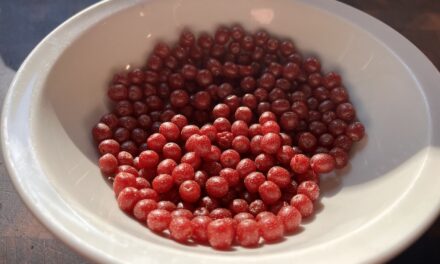
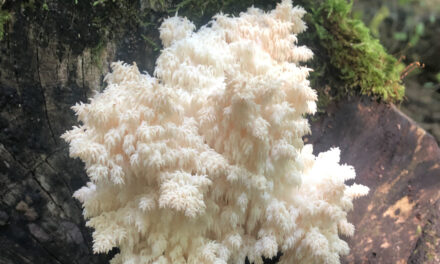
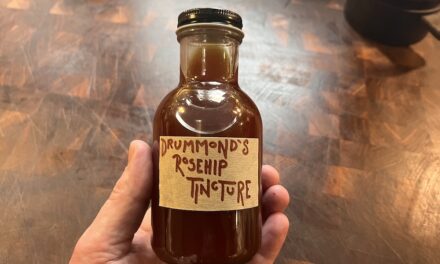
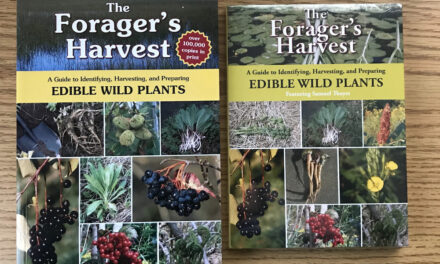

This is very helpful.Thanks for sharing.
This article is really helpful but I like the weapon you used.
That line ” I have observed that as a culture we are becoming less and less attached to the Earth” touches the heart. Very Informative, thanks for the article…